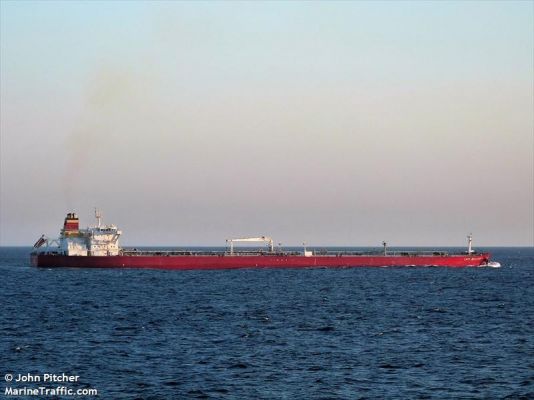European tankers continued to export Russian oil after the introduction of a price cap by the G7 countries and Australia on December 5. On the first day of restrictions, total shipments to Baltic Sea ports decreased slightly, while previous days were breaking records.
On December 5, the price limit for Russian oil, set by the G7 countries and Australia, came into force. The restrictions prohibit European companies from providing transportation services if the value of the shipment exceeds $60, excluding shipping and insurance costs.
According to the Marinetraffic and Vesselfinder navigation portals, on December 5, two European tankers with a total cargo of up to 1 million barrels left Russian ports in the Baltic Sea. Cape Bella V and Dugi Otok left Ust-Luga and headed, of course, to Asia. The first tanker indicates the Strait of Gibraltar as a transit point and the second indicates the Egyptian Port Said. Both vessels fly European flags and belong to companies from EU countries. So, Cape Bella V is owned by the Cypriot Highersea Shipping, and Dugi Otok is owned by the Croatian Tankerska Plovidba.
It is not known whether the ships are carrying Russian cargo that does not exceed the price limit. It is known that the cost of Russian-grade Urals has decreased in the last few days before the cap was introduced and can be traded at the cap level of $60. Therefore, Investing.com quotes Russian oil at $62, and Reuters reports a discount on the Brent by $25-$58 at the current cost of North Sea oil. Russia’s Finance Ministry estimated the November selling price of the Urals at $66.5 a barrel.
Judging by the data of navigation portals, yesterday only two European tankers left the Baltic ports with Russian oil. Thus, Russian oil shipments may have fallen on the first day of restrictions by one and a half times, compared to the last two weeks’ figures of 1.5 million barrels per day.
In total, at least 43 tankers are off the coast of Europe, leaving the Baltic ports of Ust-Luga, Primorsk, Vysotsk and Murmansk over the past two weeks. Their total cargo could be over 21 million barrels, the lion’s share of which goes to Asia. So, 38 tankers indicate India or the United Arab Emirates as their final destination or report a transit point – the Suez Canal, which leads to Asia. Two other tankers are headed for Turkey and three for the Netherlands. The import ban on Russian oil does not apply in EU countries if the shipment took place before December 5 and the unloading took place before January 19.
The largest shipment of Russian oil to the Baltic ports took place on the eve of the introduction of the price cap – on December 3 and 4. Then 4 and 7 tankers were loaded, and the total cargo volume was 2.1 million and 2.7 million barrels.
According to Bloomberg monitoring, the previous maximum tanker load at Baltic Sea ports this year was 1.9 million barrels per day – in June. And the minimum fell in September – and up to 800 thousand barrels.
On December 5, the shipment of petroleum products to the Baltic ports continued. Four tankers transported about 800 thousand barrels from St. Petersburg, Primorsk and Ust-Luga to Belgium, Germany and France. The embargo on petroleum products will come into effect in the EU from 5 February.
As reported EADaily, on the eve of the introduction of a price limit for Russian oil, large shipowners significantly increase the tariffs for its transportation due to the risks, and a “gray” fleet can become a replacement. After the start of Russia’s special operation in Ukraine, unknown companies bought 393 tankers on the market, TradeWinds writes, citing a study it ordered from VesselsValue. That’s 43% of all transactions on oil-carrying vessels this year. At the same time, there were hundreds of unfamiliar buyers themselves.
French shipping broker BRS Group has estimated that the “shadow fleet of tankers” has more than a thousand vessels, half of which have a deadweight of 51,000 tons (more than 350,000 barrels).
“Looking at fleet capacity, we believe Russian oil exports after December 5 can only be penalized by a lack of enough buyers to buy the 1.4 million b/d currently being consumed by European refineries.” – says the broker’s report.
Russia’s largest shipowner, Sovcomflot, had more than 140 tankers of various sizes before the start of the special operation in Ukraine. At the same time, the bulk of the fleet consists of Aframax-class tankers, which can carry 600,000 barrels. To refocus on Asia, Russia will need to have up to 80 VLCC-class vessels just to transport oil, Credit Suisse investment strategist noted Forbes Zoltán Pozar. These ships can carry up to 2 million barrels of oil, and their required number is 10% of all world tankers of this class.


